Seismic Performance of Bridge Piers Constructed with PP-ECC at Potential Plastic Hinge Regions
Abstract
1. Introduction
2. Experimental Program and Setup
2.1. Test Specimens and Material Properties
2.2. Experimental Setup and Loading Protocol
3. Material Properties of Concretes
3.1. Compressive Test
3.2. Tensile Test of PP-ECC
4. Results and Discussion
4.1. General Test Observations and Failure Modes of Piers
4.2. Lateral Load-Displacement Hysteretic Curves
4.3. Lateral Resistance Capacity and Ductility
4.4. Stiffness Degradation
4.5. Energy Dissipation
4.6. Equivalent Viscous Damping Ratio
5. Conclusions
- (1)
- The PP-ECC plate specimen clearly exhibited strain-hardening behavior and multiple steady fine-cracking characteristics under the uniaxial tensile test. The tensile strength and strain capacity of the PP-ECC plate were greater than 3.2 MPa and 2.6%, respectively.
- (2)
- The seismic performance of the PP-ECC specimens, including the development and control of cracks, the resistance capacity, ductility property, stiffness degradation, and energy dissipation, were much better than those the reinforced concrete (RC) specimen. Therefore, constructed with PP-ECC at potential plastic hinge regions could effectively improve the seismic behavior and damage tolerance of bridge piers.
- (3)
- The bearing capacity of PP-ECC and RC specimens increased with the increase of the axial compression ratio. Additionally, the ductility coefficient decreased with the increasing axial compression ratio. The PP-ECC piers with a high axial compression ratio accelerated the bearing capacity and stiffness degradation after peak loading. The energy dissipation and equivalent viscous damping ratio of PP-ECC increased considerably as the axial compression ratio increased under the same displacement level.
- (4)
- The displacement ductility of PP-ECC piers was improved with an increase in the stirrup ratio. The stirrup ratio had obvious influence on the initial stiffness of PP-ECC piers but had limited effect on the rate of stiffness degradation after peak loading. It had a negligible effect on the energy dissipation and equivalent viscous damping ratio of PP-ECC piers.
- (5)
- Increasing the height of PP-ECC was favorable to the ductility enhancement, but unfavorable to the bearing capacity and equivalent viscous damping ratio. Therefore, the height of the PP-ECC region should be controlled strictly in the seismic design of PP-ECC piers.
Author Contributions
Funding
Conflicts of Interest
References
- Zhang, R.; Matsumoto, K.; Hirata, T.; Ishizeki, Y.; Niwa, J. Application of PP-ECC in beam–column joint connections of rigid-framed railway bridges to reduce transverse reinforcements. Eng. Struct. 2015, 86, 146–156. [Google Scholar] [CrossRef]
- Zhang, Y.; Harries, K.A.; Yuan, W. Experimental and numerical investigation of the seismic performance of hollow rectangular bridge piers constructed with and without steel fiber reinforced concrete. Eng. Struct. 2013, 48, 255–265. [Google Scholar] [CrossRef]
- Kawashima, K.; Zafra, R.; Sasaki, T.; Kajiwara, K.; Nakayama, M. Effect of polypropylene fiber reinforced cement composite and steel fiber reinforced concrete for enhancing the seismic performance of bridge columns. J. Earthq. Eng. 2011, 15, 1194–1211. [Google Scholar] [CrossRef]
- Parra-Montesions, G.; Peterfreund, S.; Chao, S. Highly damage-tolerant beam-column joints through use of high-performance fiber-reinforced cement composites. Aci Struct. J. 2005, 102, 487–495. [Google Scholar]
- Qudah, S.; Maalej, M. Application of Engineered Cementitious Composites (ECC) in interior beam–column connections for enhanced seismic resistance. Eng. Struct. 2014, 69, 235–245. [Google Scholar] [CrossRef]
- Zhang, R.; Meng, Q.L.; He, W.; Niwa, J. Experimental investigation on shear behavior of PP-ECC beams by considering effect of stirrup. China J. Highw. Transp. 2017, 30, 234–249. (In Chinese) [Google Scholar]
- Dang, Z.; Liang, X.W.; Deng, M.K.; Li, F.Y.; Yu, J. Experimental and theoretical studies on seismic behavior of fiber reinforced concrete shear walls. China J. Build. Struct. 2014, 35, 12–21. (In Chinese) [Google Scholar]
- Han, J.P.; Liu, W.L. Experimental investigation on seismic behavior of PVA fiber reinforced concrete columns with high axial compression ratios. Eng. Mech. 2017, 34, 193–201. (In Chinese) [Google Scholar]
- Liang, X.W.; Kang, L.; Deng, M.K.; Dang, Z. Experimental investigation on seismic behavior of columns with fiber-reinforced concrete in potential plastic region. China J. Build. Struct. 2014, 35, 63–70. (In Chinese) [Google Scholar]
- Zhang, R. Application of PP-ECC on Rigid-Framed Bridges for Improving Structural Performance. Ph.D. Thesis, Tokyo Institute of Technology, Tokyo, Japan, 2014. [Google Scholar]
- Zhang, R.; Matsumoto, K.; Hirata, T.; Ishizeki, Y.; Niwa, J. Shear behavior of polypropylene fiber reinforced ECC beams with varying shear reinforcement ratios. J. JSCE 2014, 2, 39–53. [Google Scholar] [CrossRef]
- Daniel, L.; Loukili, A. Behavior of high-strength fiber reinforced concrete beams under cyclic loading. Aci Struct. J. 2002, 99, 248–256. [Google Scholar]
- Shin, M.; Choi, Y.Y.; Kim, I.H.; Lee, K. Effectiveness of low-cost fiber-reinforced cement composites in hollow columns under cyclic loading. Constr. Build. Mater. 2013, 47, 623–635. [Google Scholar] [CrossRef]
- Li, V.C.; Leung, C.K.Y. Steady-state and multiple cracking of short random fiber composites. J. Eng. Mech. 1992, 118, 2246–2264. [Google Scholar] [CrossRef]
- Maalej, M.; Li, V.C. Flexural/tensile-strength ratio in engineered cementitious composites. J. Mater. Civ. Eng. 1994, 6, 513–528. [Google Scholar] [CrossRef]
- Li, V.C. Engineered cementitious composites (ECC)–tailored composites through micromechanical modeling. In Fiber Reinforced Concrete: Present and the Future; Banthia, N., Mufti, A., Eds.; Canadian Society of Civil Engineers: Montreal, QC, Canada, 1998; pp. 64–97. [Google Scholar]
- Li, V.C. On Engineered Cementitious Composites (ECC); a review of the material and its application. J. Adv. Concr. Technol. 2003, 1, 215–230. [Google Scholar] [CrossRef]
- Şahmaran, M.; Li, V.C. Engineered Cementitious Composites: Can composites be accepted as crack-free concrete. Transp. Res. Rec. J. Transp. Res. Board 2010, 2164, 1–8. [Google Scholar] [CrossRef]
- Ma, H.; Xue, J.Y.; Zhang, X.C.; Luo, D.M. Seismic performance of steel-reinforced recycled concrete columns under low cyclic loads. Constr. Build. Mater. 2013, 48, 229–237. [Google Scholar] [CrossRef]
- Ma, H.; Xue, J.Y.; Liu, Y.H.; Zhang, X.C. Cyclic loading tests and shear strength of steel reinforced recycled concrete short columns. Eng. Struct. 2015, 92, 55–68. [Google Scholar] [CrossRef]
- Wang, D.Y.; Wang, Z.Y.; Smith, S.T.; Yu, T. Seismic performance of CFRP-confined circular high-strength concrete columns with high axial compression ratio. Constr. Build. Mater. 2017, 134, 91–103. [Google Scholar] [CrossRef]
- Yuan, W.; Guo, A.X.; Li, H. Experimental investigation on the cyclic behaviors of corroded coastal bridge piers with transfer of plastic hinge due to non-uniform corrosion. Soil Dyn. Earthq. Eng. 2017, 102, 112–123. [Google Scholar] [CrossRef]
- Mahin, S.A.; Bertero, V.V. Problems in establishing and predicting ductility in aseismic design. In Proceedings of the International Symposium on Earthquake Structural Engineering, St. Luis, MO, USA, 19–21 August 1976; pp. 613–628. [Google Scholar]
- Mahin, S.A.; Bertero, V.V. An evaluation of inelastic seismic design spectra. J. Struct. Div. 1981, 107, 1777–1795. [Google Scholar]
- Cassese, P.; Ricci, P.; Verderame, G.M. Experimental study on the seismic performance of existing reinforced concrete bridge piers with hollow rectangular section. Eng. Struct. 2017, 144, 88–106. [Google Scholar] [CrossRef]
- Clough, R.W.; Penzien, J. Dynamics of Structures, 2nd ed.; McGraw Hill Inc.: New York, NY, USA, 1993. [Google Scholar]
- Guo, A.X.; Li, H.; Ba, X.; Guan, X.C.; Li, H. Experimental investigation on the cyclic performance of reinforced concrete piers with chloride-induced corrosion in marine environment. Eng. Struct. 2015, 105, 1–11. [Google Scholar] [CrossRef]
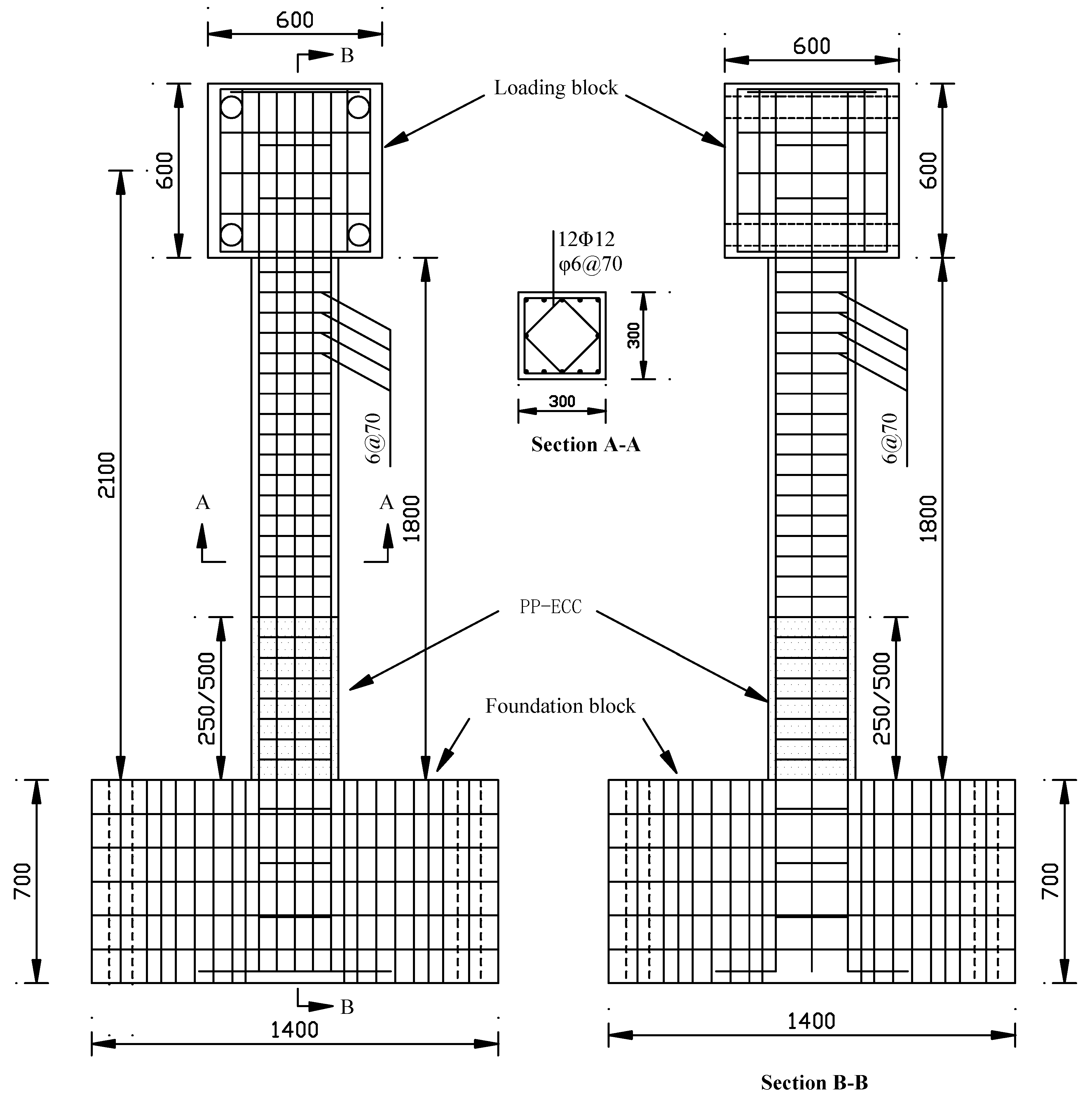
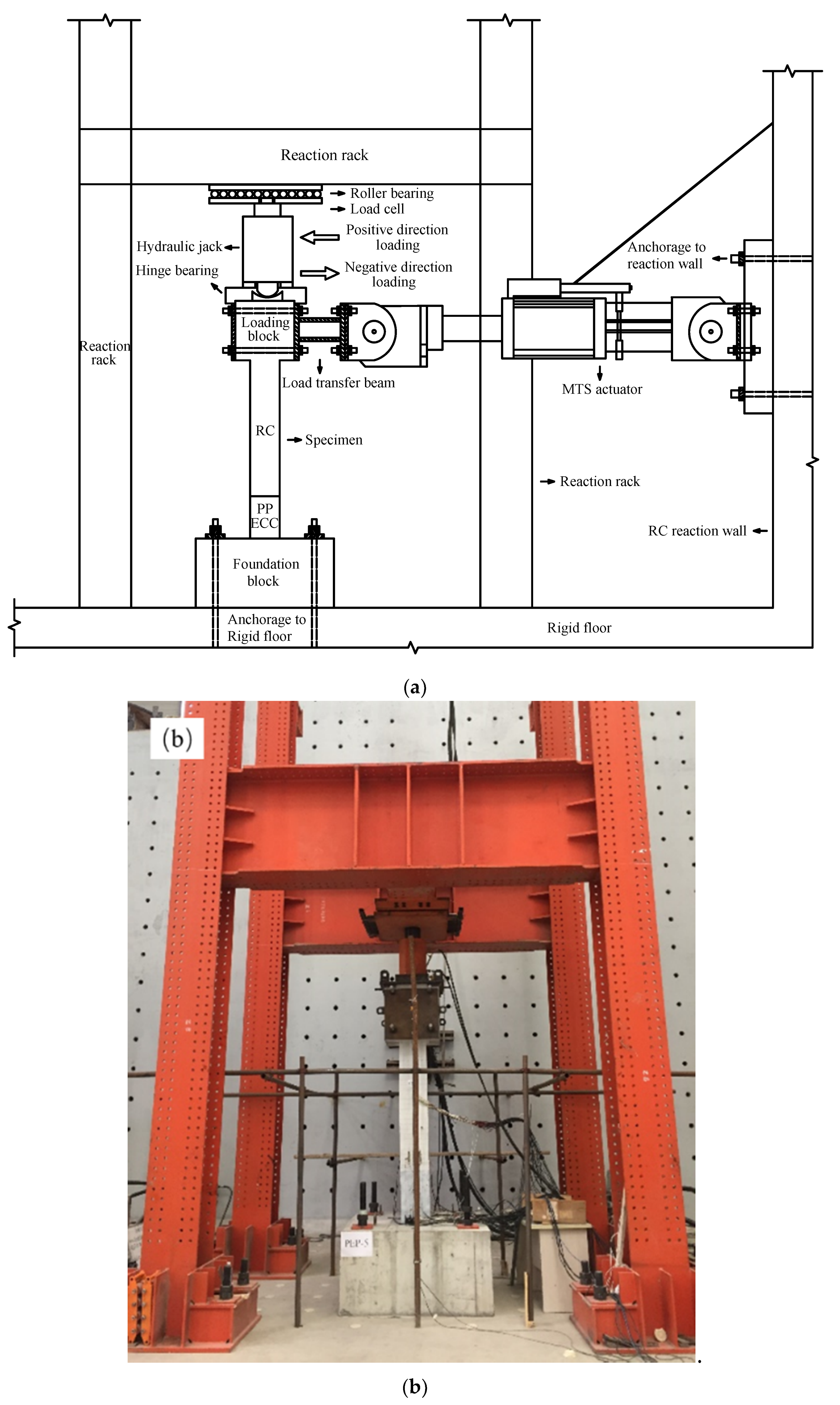
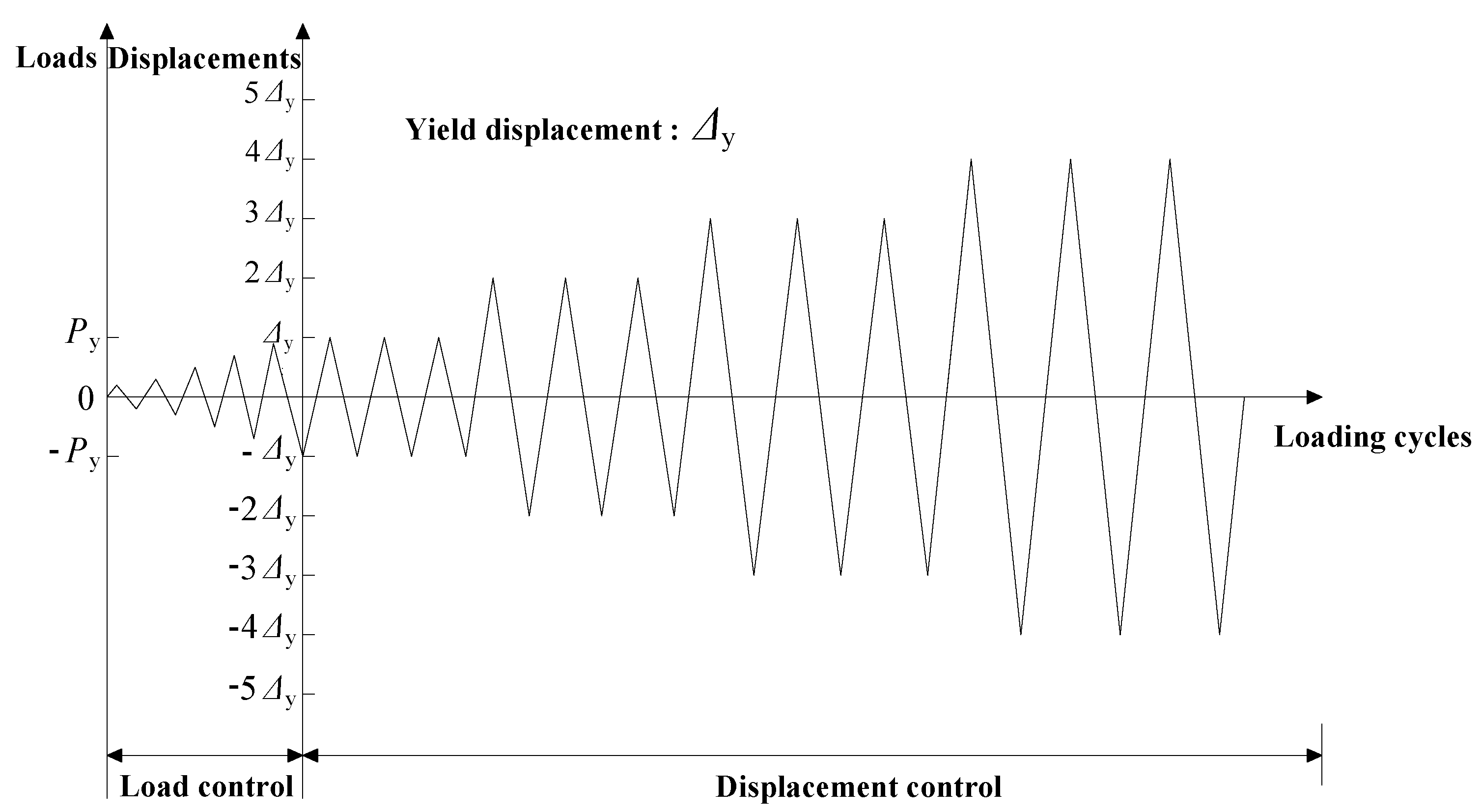
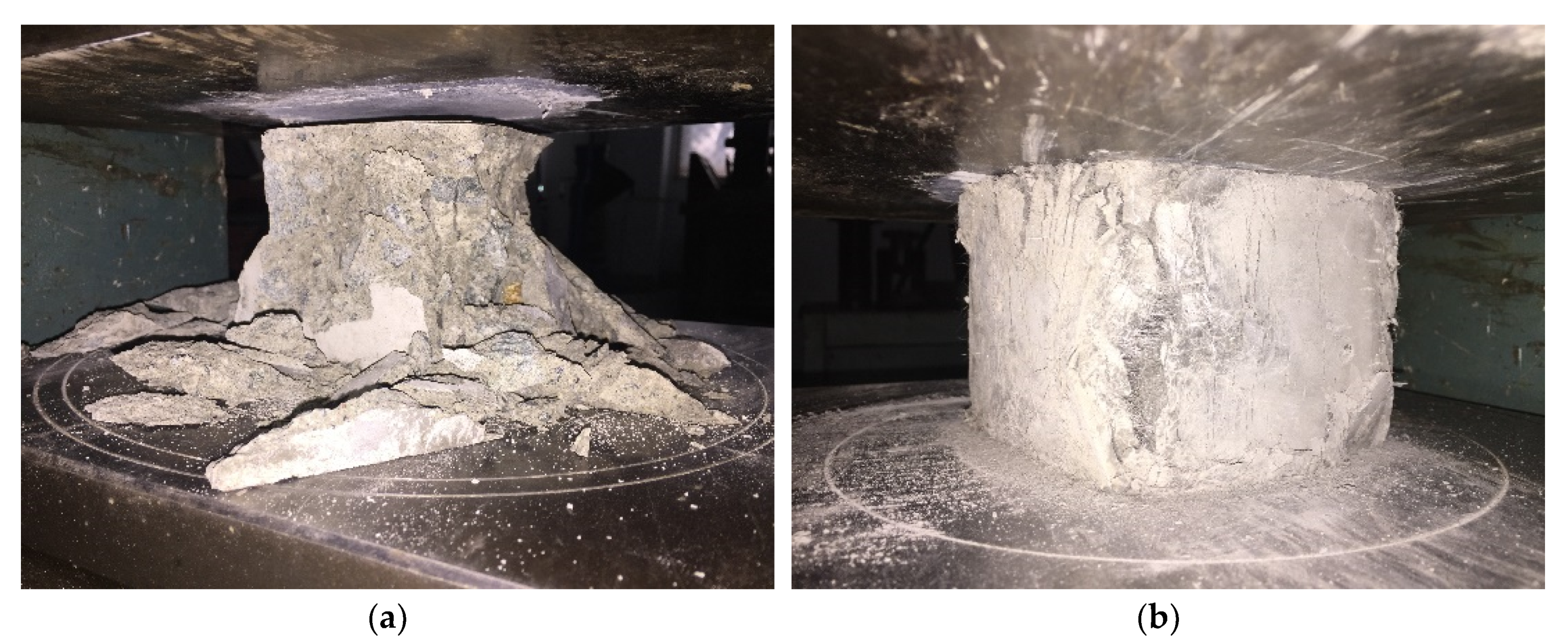
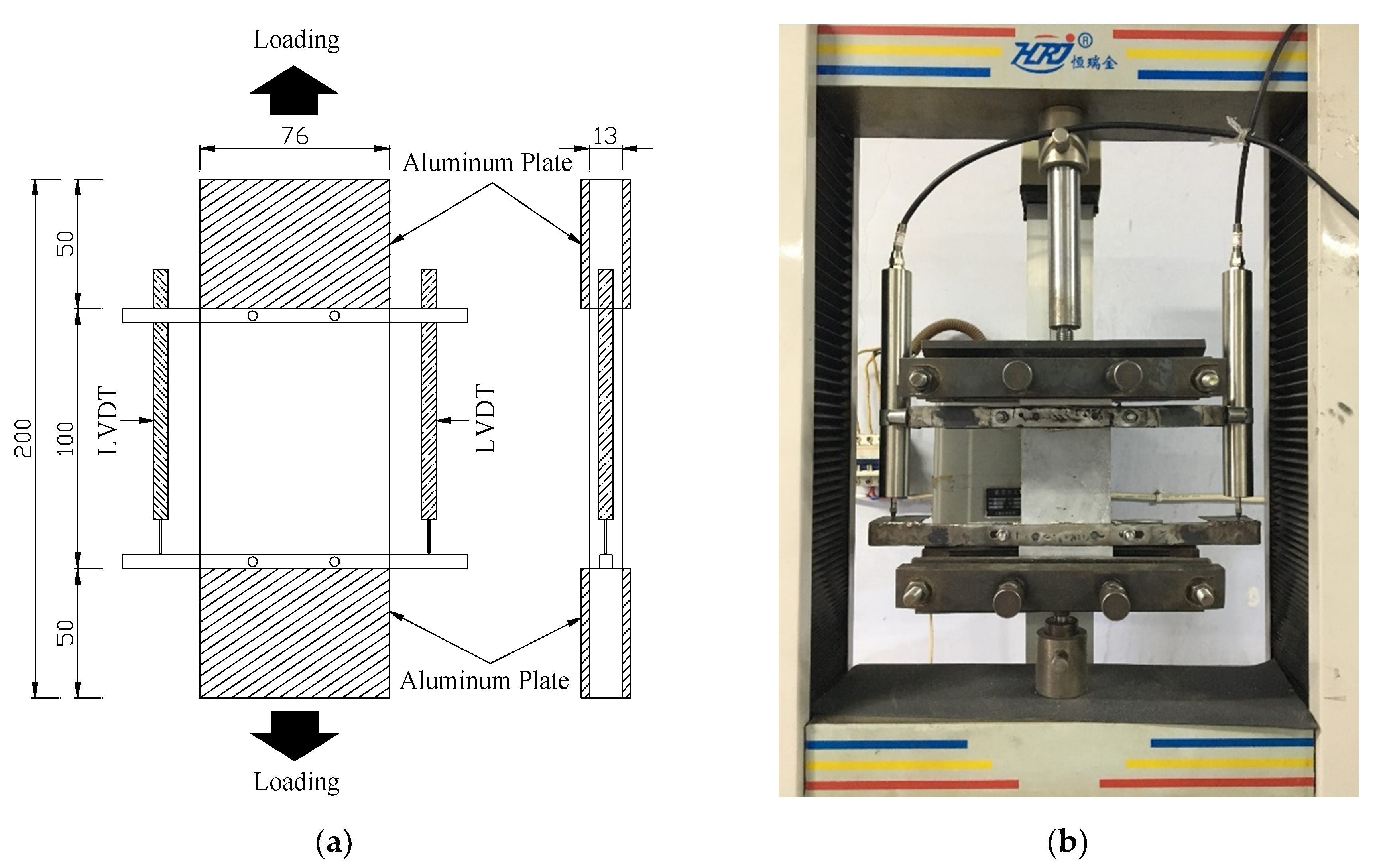
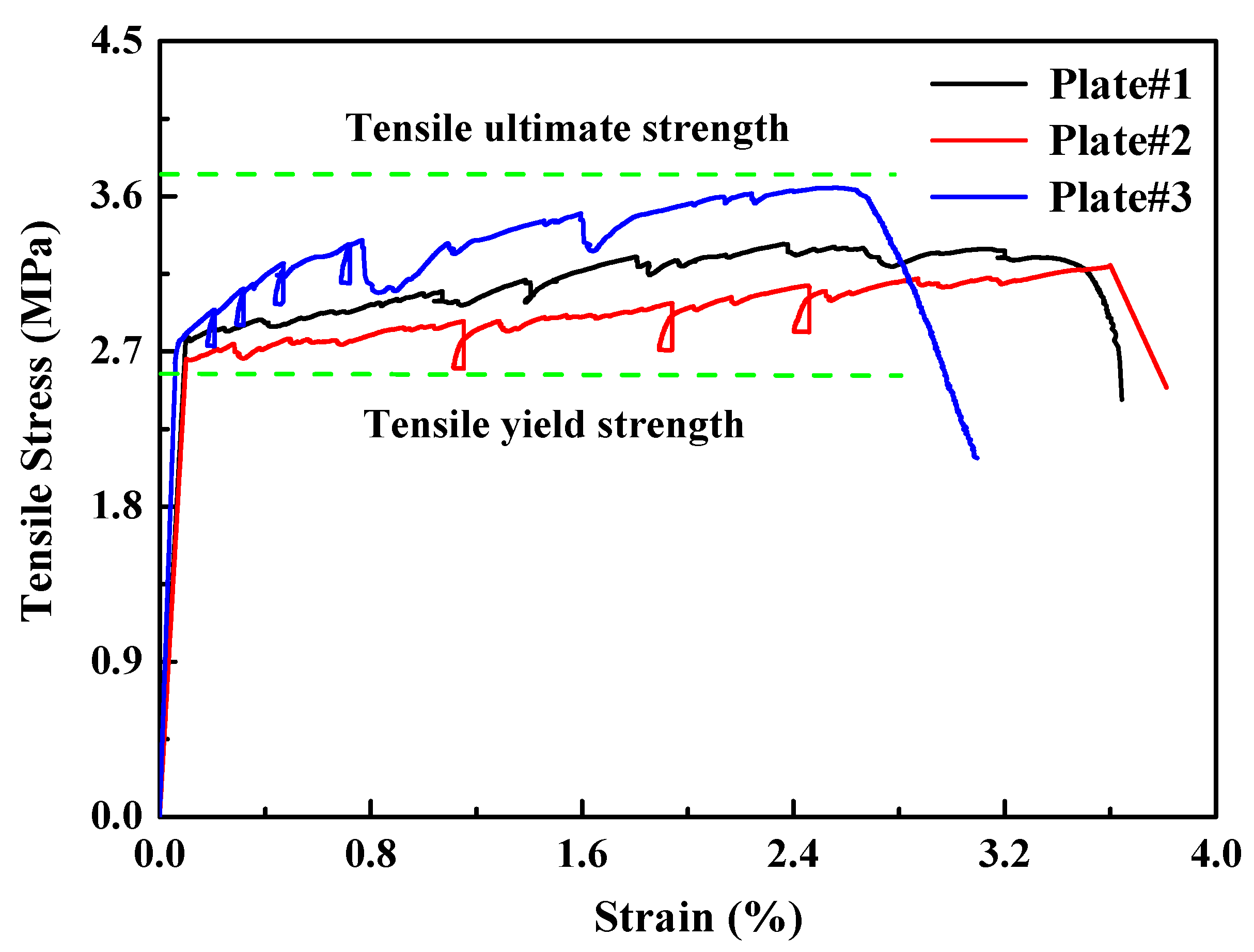
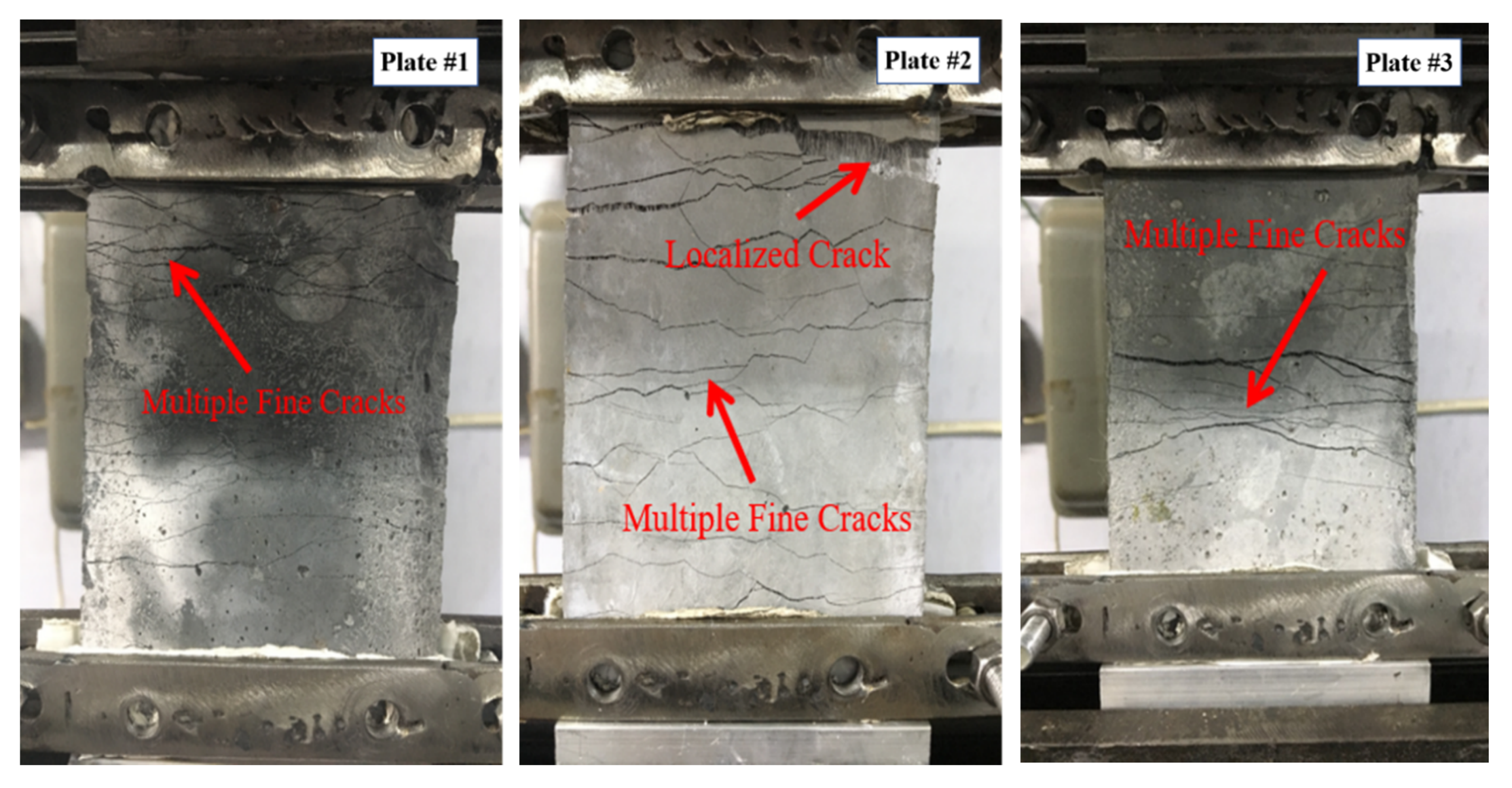
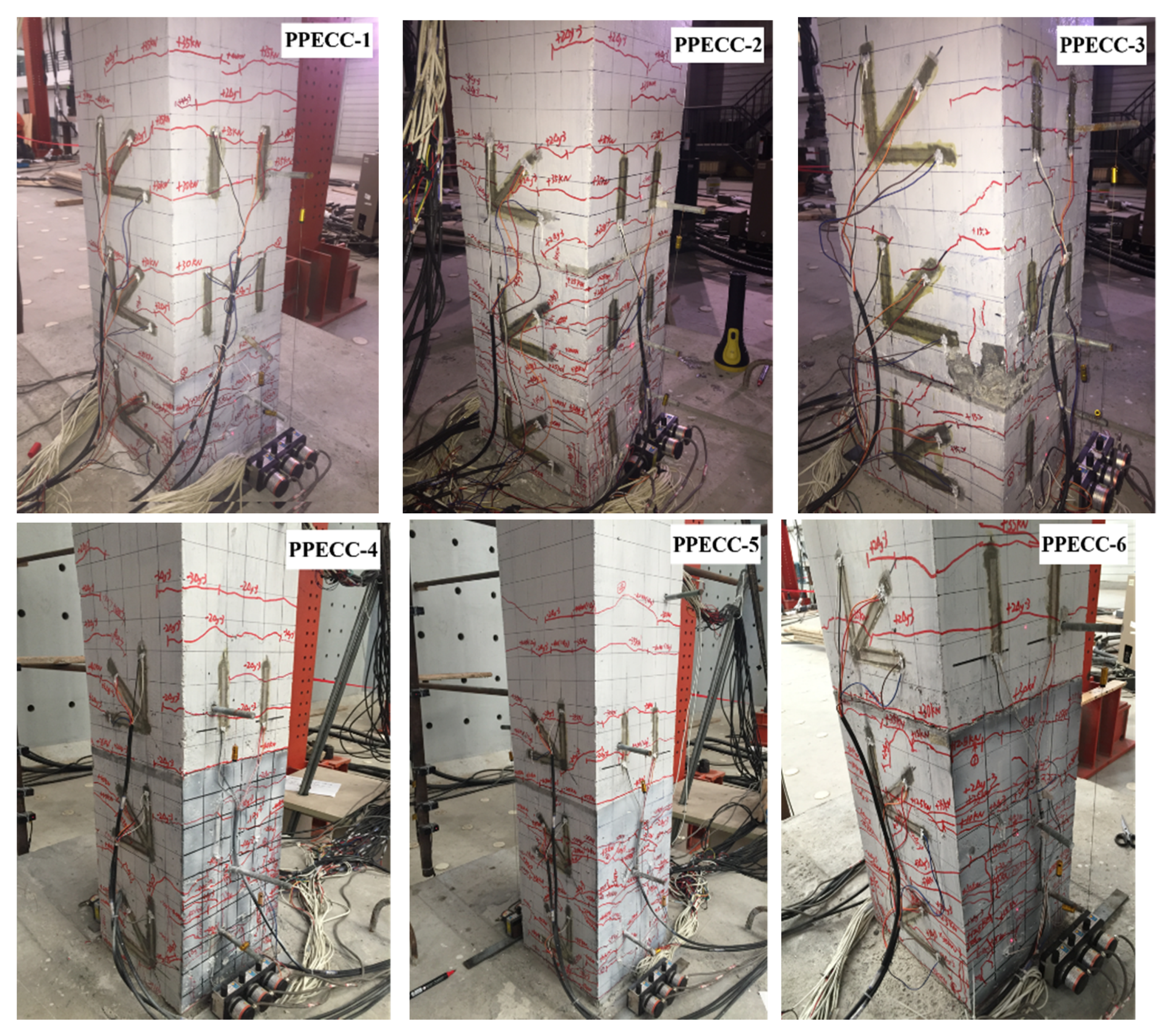

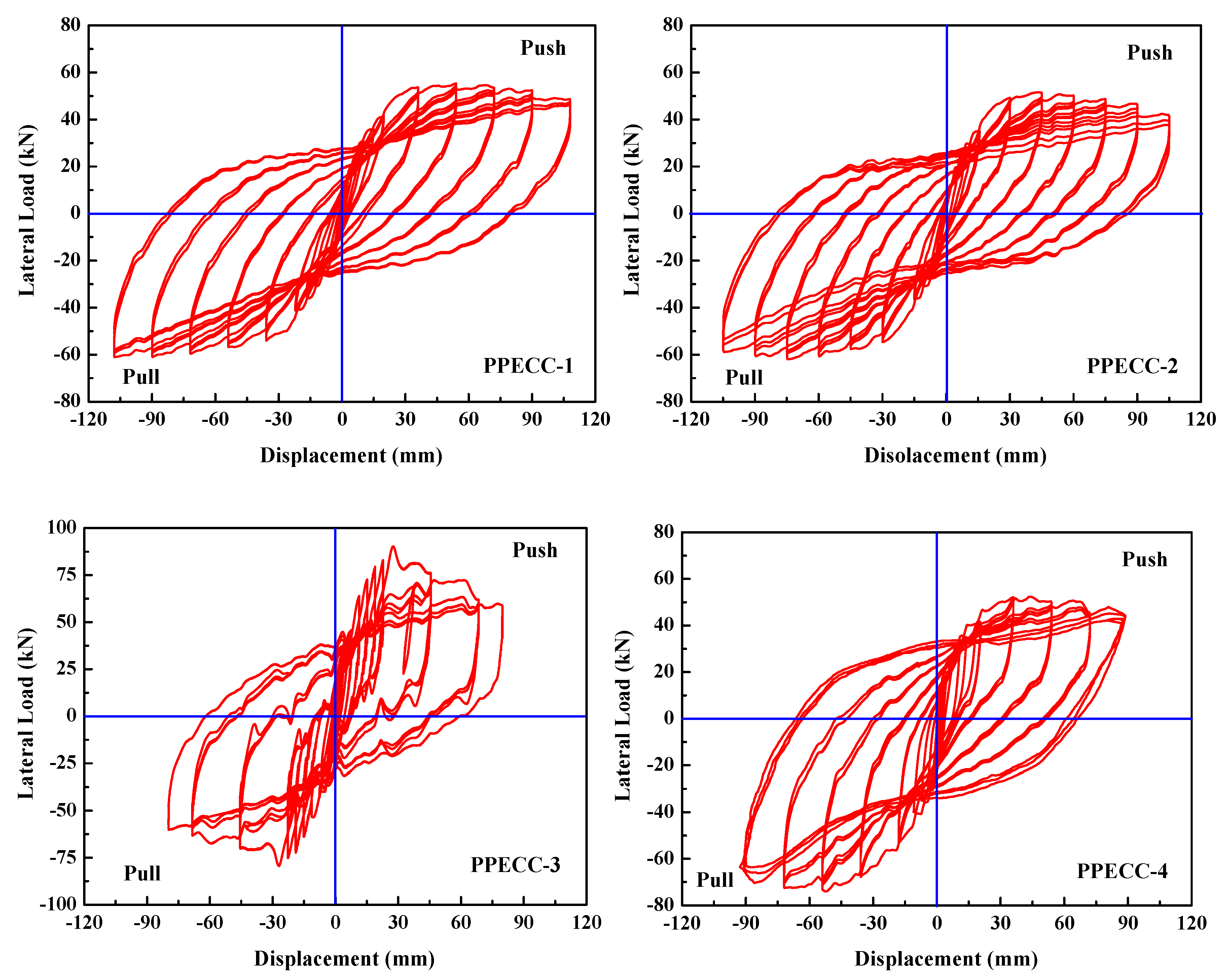
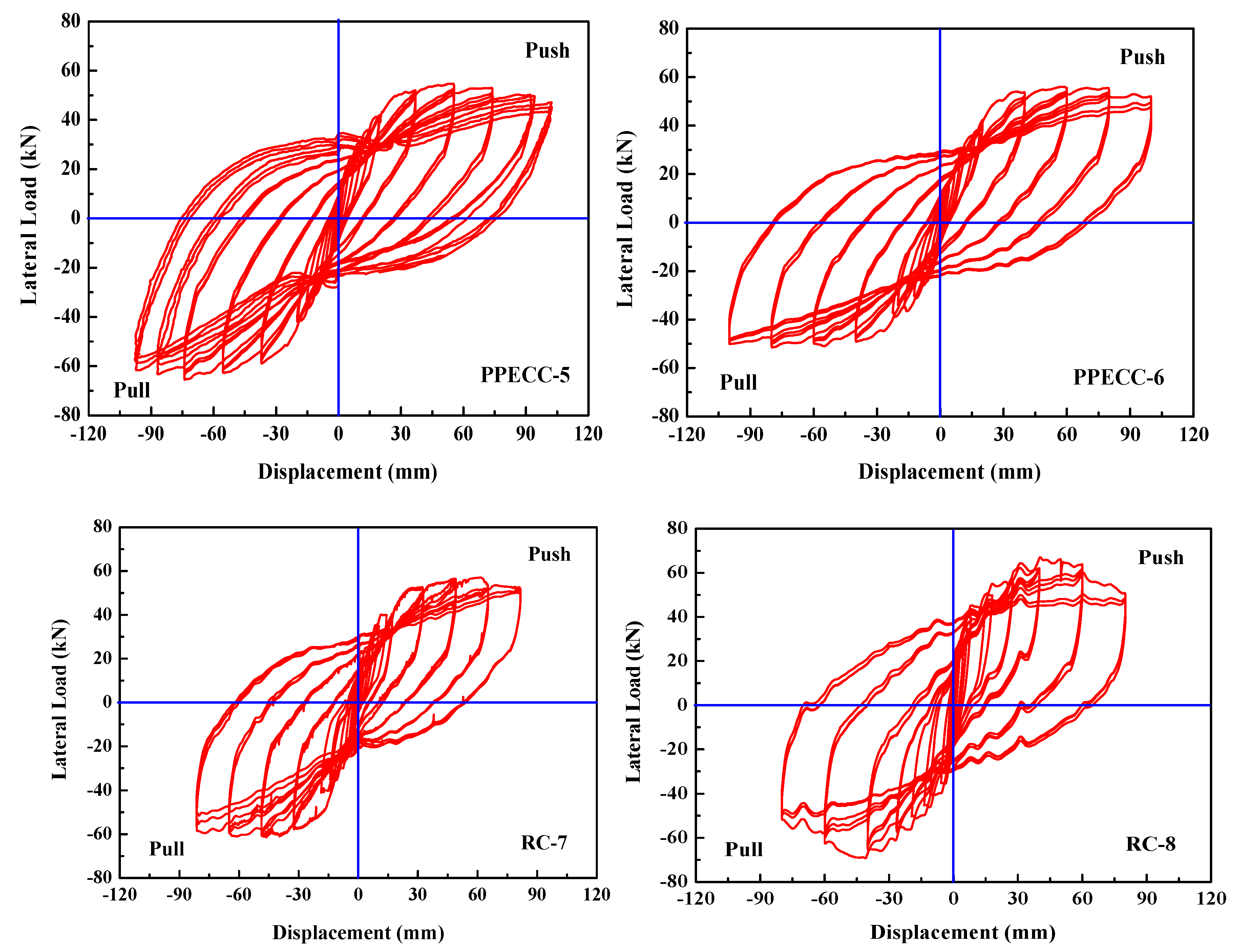
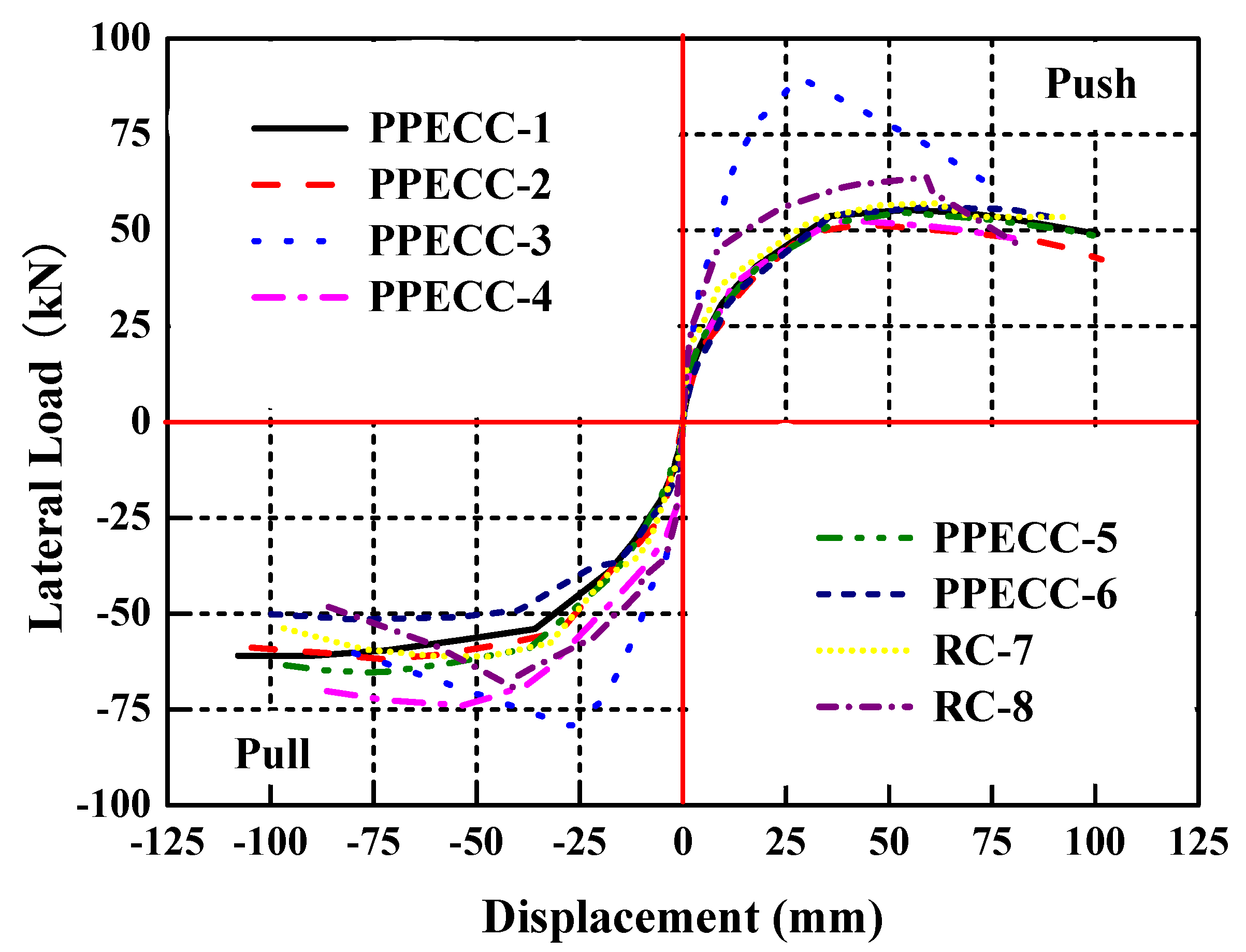
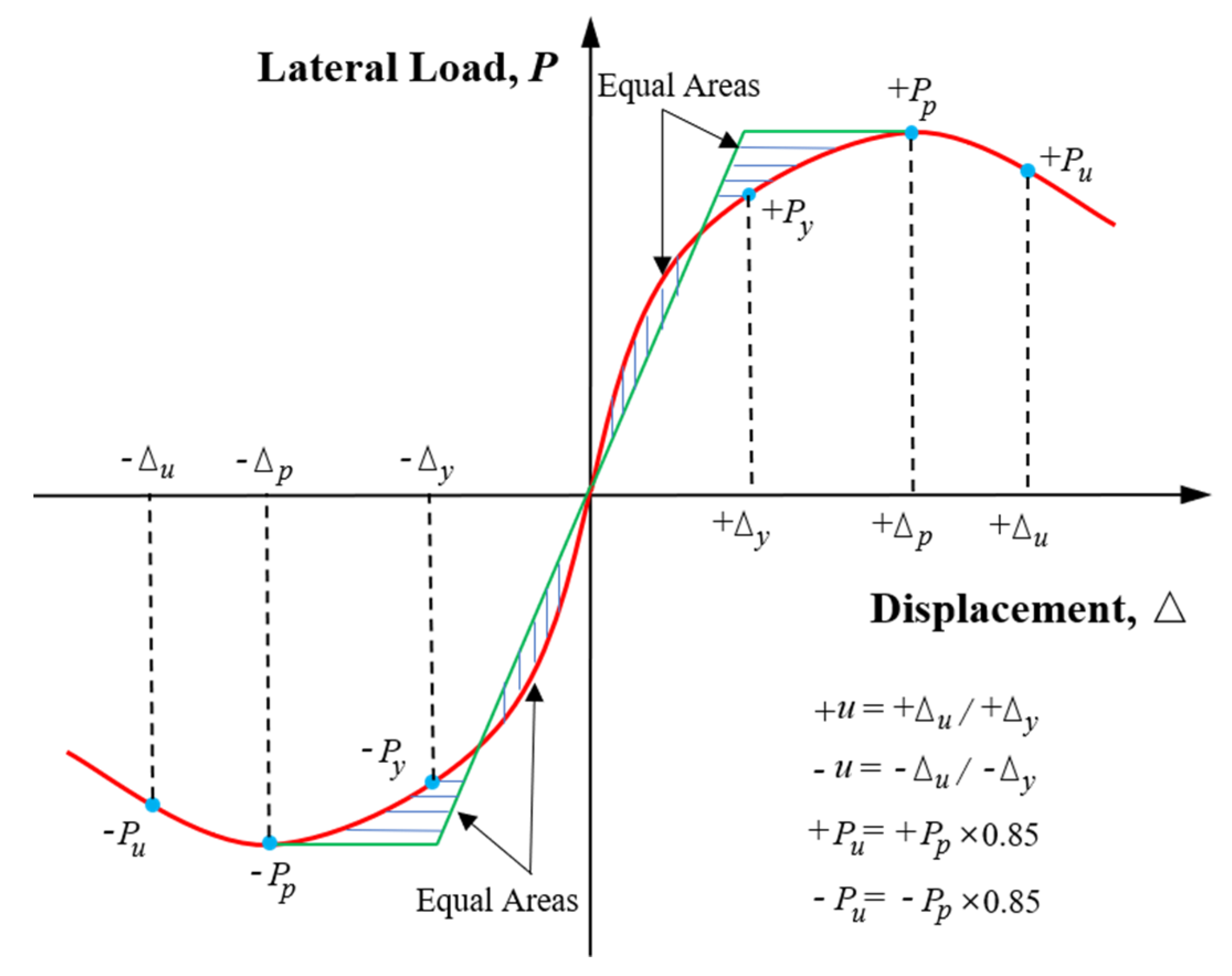
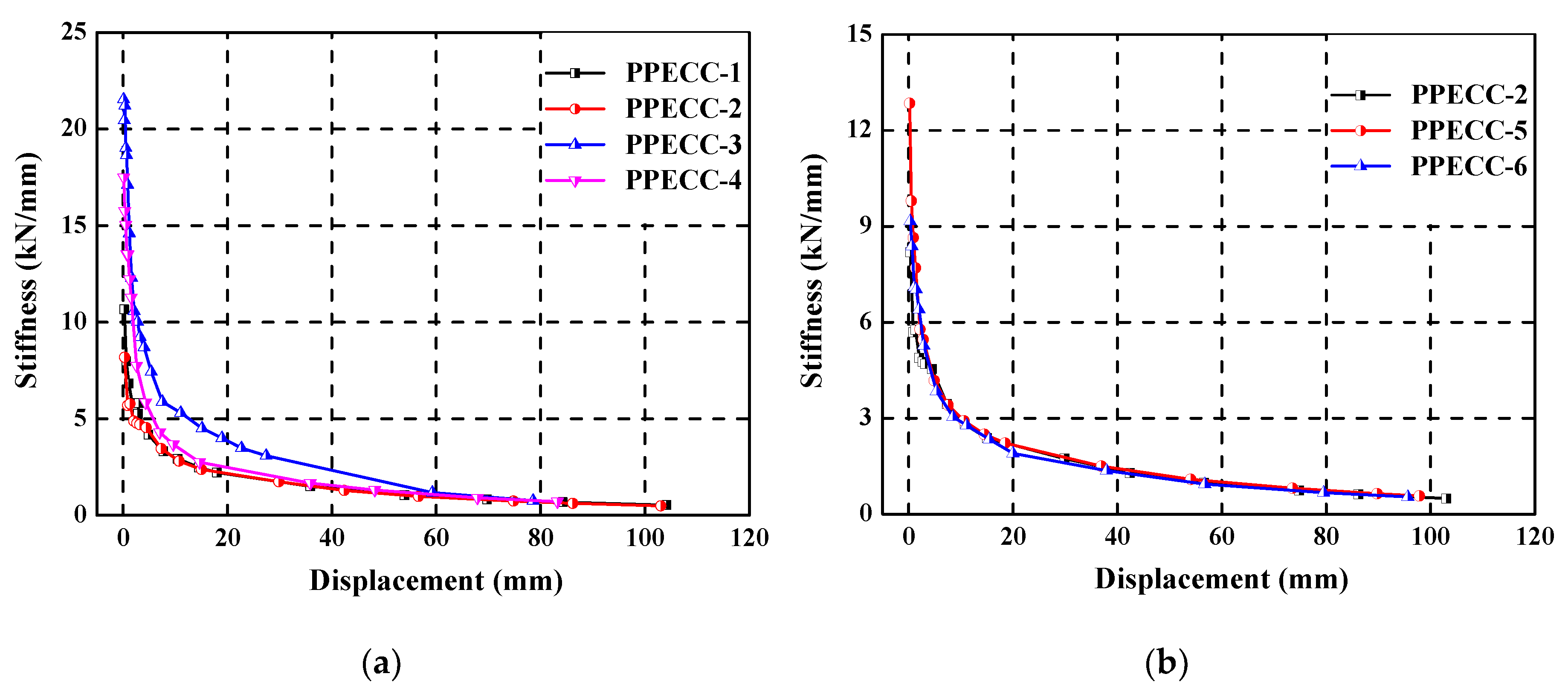
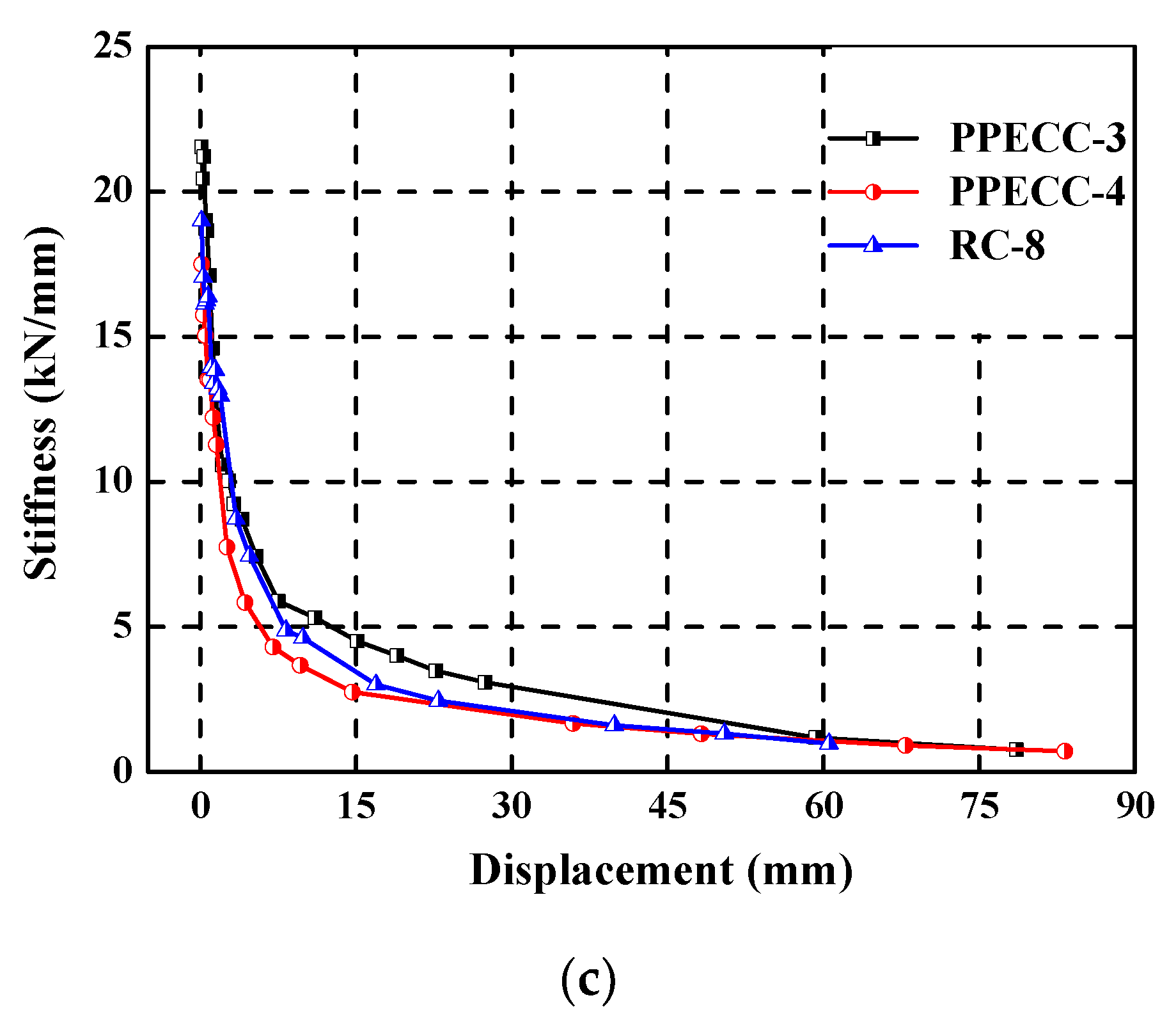
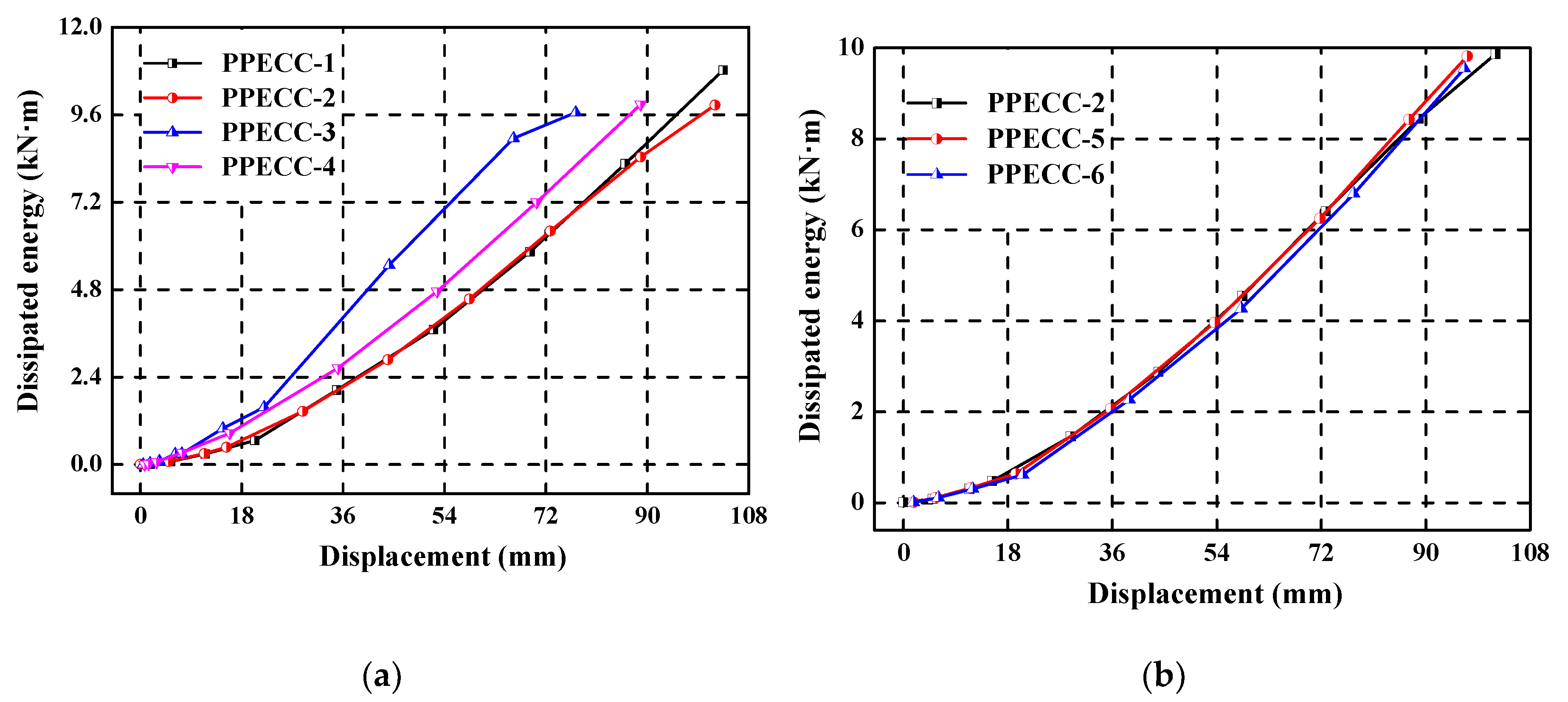

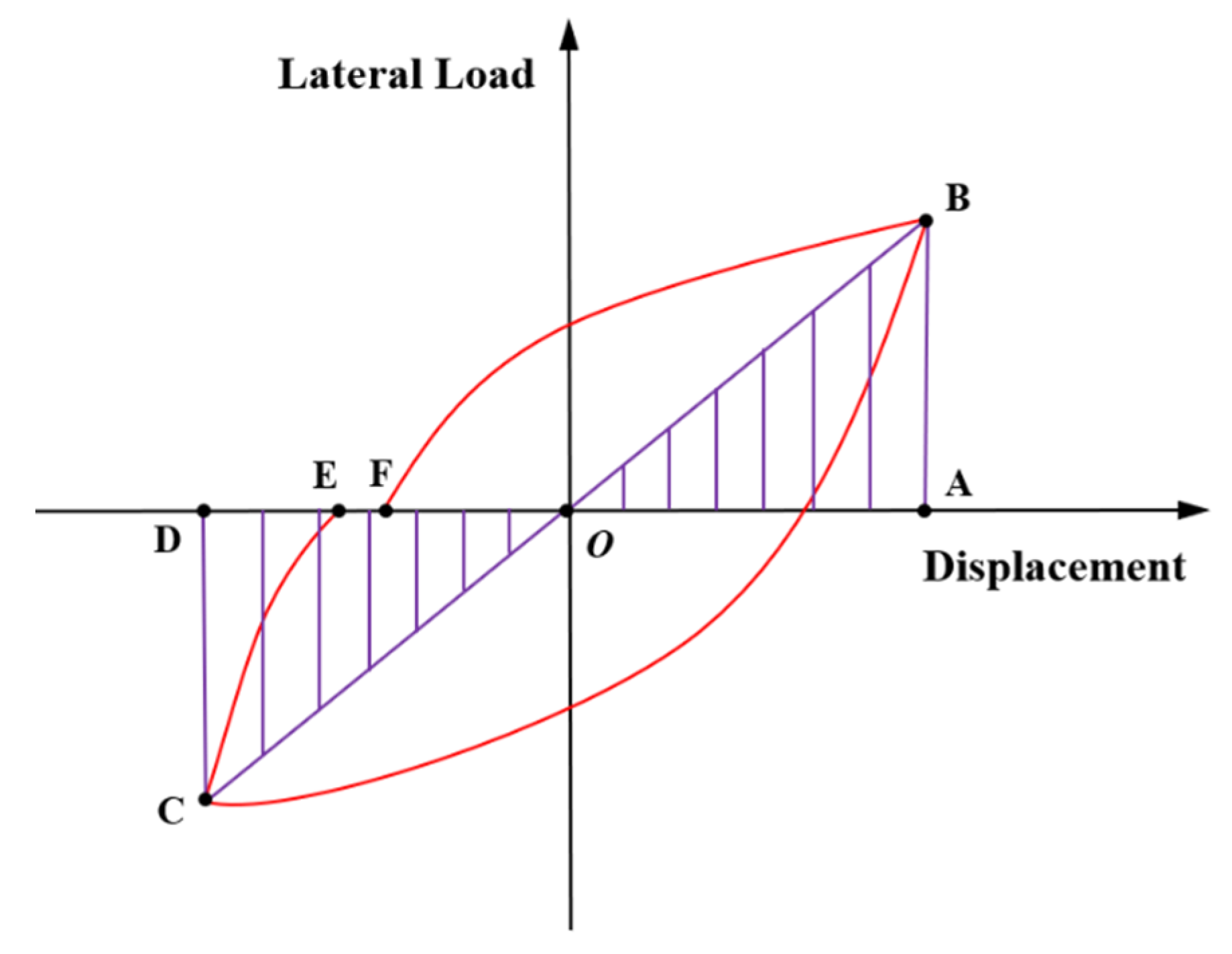
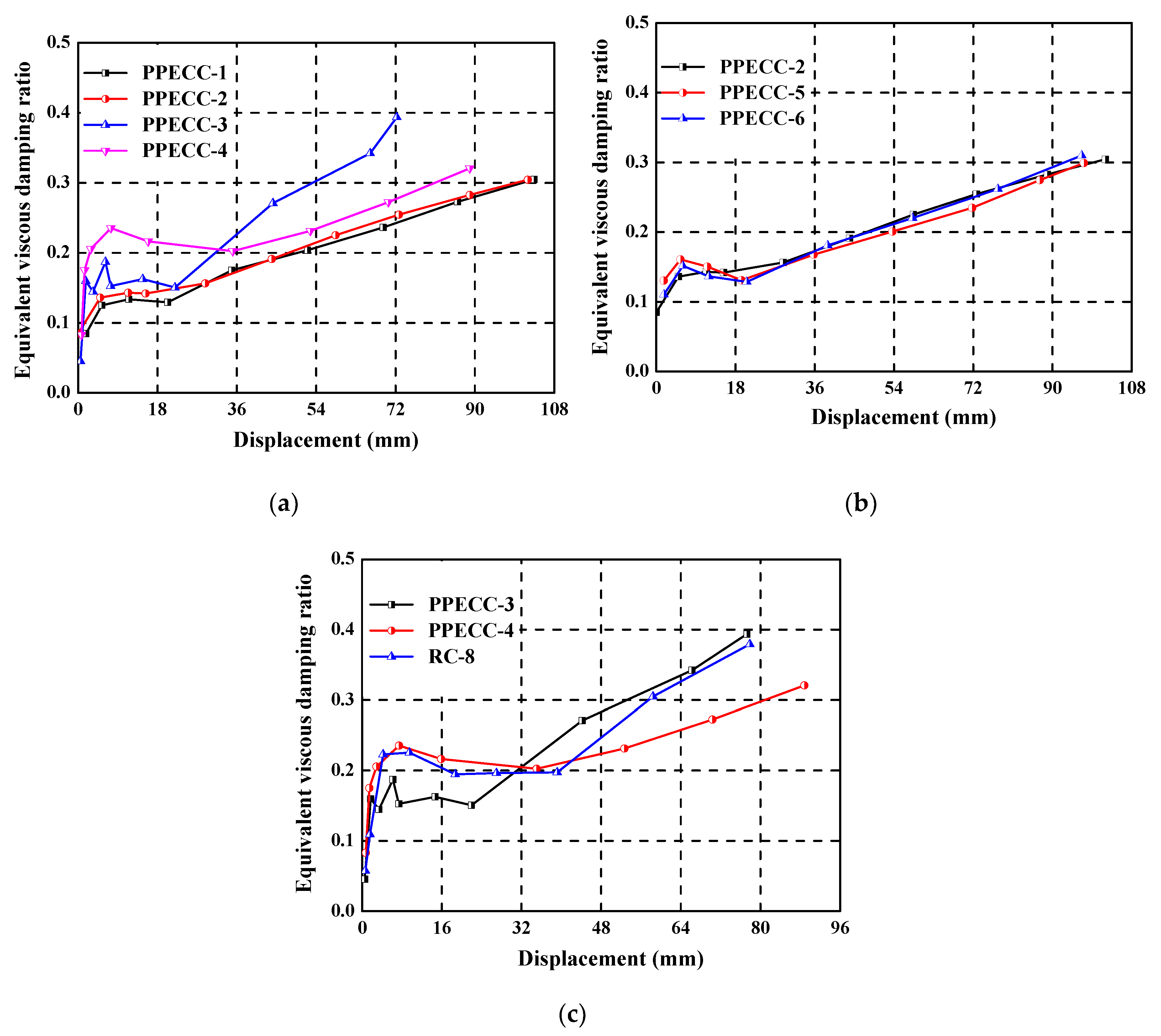
| Specimen | H (mm) | λ | ρl (%) | ρso (%) | ρsi (%) | h (mm) | n |
|---|---|---|---|---|---|---|---|
| PPECC-1 | 2100 | 7.0 | 1.51 | 0.79 | 0.79 | 250 | 0.1 |
| PPECC-2 | 2100 | 7.0 | 1.51 | 0.79 | 0.79 | 500 | 0.1 |
| PPECC-3 | 2100 | 7.0 | 1.51 | 0.79 | 0.79 | 250 | 0.3 |
| PPECC-4 | 2100 | 7.0 | 1.51 | 0.79 | 0.79 | 500 | 0.3 |
| PPECC-5 | 2100 | 7.0 | 1.51 | 0.79 | 0.46 | 500 | 0.1 |
| PPECC-6 | 2100 | 7.0 | 1.51 | 0.79 | 0 | 500 | 0.1 |
| RC-7 | 2100 | 7.0 | 1.51 | 0.79 | 0.79 | 0 | 0.1 |
| RC-8 | 2100 | 7.0 | 1.51 | 0.79 | 0.79 | 0 | 0.3 |
| Fiber | Diameter (μm) | Length (mm) | Density (kg/m3) | Stretch Rate (%) | Elastic Modulus (GPa) | Tensile Strength (MPa) |
|---|---|---|---|---|---|---|
| polypropylene | 20 | 12 | 0.91 | 15 | 5 | 480 |
| Cement (kg/m3) | Fly Ash (kg/m3) | Water (kg/m3) | PP Fiber (kg/m3) | Water Reducer (kg/m3) | W/B (%) | FA/B (%) |
|---|---|---|---|---|---|---|
| 820 | 442 | 505 | 18.2 | 8.834 | 0.4 | 0.35 |
| Specimen | +Py/−Py (Py) | +Δy/−Δy (Δy) | +Pp/−Pp (Pp) | +Δp/−Δp (Δp) | +Pu/−Pu (Pu) | +Δu/−Δu (Δu) | +μ/−μ (μ) |
|---|---|---|---|---|---|---|---|
| PPECC-1 | 41.0/38.9 (40.0) | 18.3/17.7 (18.0) | 55.4/61.0 (58.2) | 54.0/89.7 (71.9) | 47.1/51.8 (49.5) | 107.8/107.8 (107.8) | 5.90/6.09 (6.00) |
| PPECC-2 | 35.1/36.1 (35.6) | 14.5/15.4 (15.0) | 51.6/61.9 (56.8) | 43.5/74.6 (59.1) | 43.8/52.6 (48.2) | 97.2/104.5 (100.9) | 6.70/6.79 (6.75) |
| PPECC-3 | 83.0/75.2 (79.1) | 22.7/22.7 (22.7) | 90.2/79.3 (84.8) | 27.7/27.1 (27.4) | 76.7/67.4 (72.1) | 61.6/69.5 (65.6) | 2.7/3.1 (2.9) |
| PPECC-4 | 40.7/39.9 (40.3) | 18.4/17.9 (18.2) | 52.4/74.0 (63.2) | 44.0/52.5 (48.3) | 44.5/62.9 (53.7) | 83.5/87.5 (85.5) | 4.54/4.89 (4.72) |
| PPECC-5 | 40.9/41.3 (41.1) | 18.5/18.5 (18.5) | 54.7/65.5 (60.1) | 52.9/73.9 (63.4) | 46.5/55.7 (51.1) | 101.4/97.5 (99.5) | 5.48/5.27 (5.38) |
| PPECC-6 | 38.3/37.9 (38.1) | 18.0/22.0 (20.0) | 56.0/51.5 (53.4) | 58.3/79.8 (69.1) | 47.6/43.8 (45.7) | 99.8/99.7 (99.8) | 5.54/4.53 (5.04) |
| RC-7 | 39.9/40.0 (40.0) | 14.3/18.3 (16.3) | 57.1/61.2 (59.2) | 61.5/47.4 (54.5) | 48.5/52.0 (50.3) | 81.0/80.1 (80.6) | 5.66/4.38 (5.02) |
| RC-8 | 56.0/56.3 (56.2) | 24.2/21.7 (23.0) | 63.9/69.2 (66.6) | 59.8/41.2 (50.5) | 54.3/58.9 (56.6) | 60.5/60.6 (60.6) | 2.50/2.79 (2.65) |
© 2020 by the authors. Licensee MDPI, Basel, Switzerland. This article is an open access article distributed under the terms and conditions of the Creative Commons Attribution (CC BY) license (http://creativecommons.org/licenses/by/4.0/).
Share and Cite
Jia, Y.; Zhao, R.; Li, F.; Zhou, Z.; Wang, Y.; Zhan, Y.; Shi, X. Seismic Performance of Bridge Piers Constructed with PP-ECC at Potential Plastic Hinge Regions. Materials 2020, 13, 1865. https://doi.org/10.3390/ma13081865
Jia Y, Zhao R, Li F, Zhou Z, Wang Y, Zhan Y, Shi X. Seismic Performance of Bridge Piers Constructed with PP-ECC at Potential Plastic Hinge Regions. Materials. 2020; 13(8):1865. https://doi.org/10.3390/ma13081865
Chicago/Turabian StyleJia, Yi, Renda Zhao, Fuhai Li, Zhidong Zhou, Yongbao Wang, Yulin Zhan, and Xianming Shi. 2020. "Seismic Performance of Bridge Piers Constructed with PP-ECC at Potential Plastic Hinge Regions" Materials 13, no. 8: 1865. https://doi.org/10.3390/ma13081865
APA StyleJia, Y., Zhao, R., Li, F., Zhou, Z., Wang, Y., Zhan, Y., & Shi, X. (2020). Seismic Performance of Bridge Piers Constructed with PP-ECC at Potential Plastic Hinge Regions. Materials, 13(8), 1865. https://doi.org/10.3390/ma13081865






